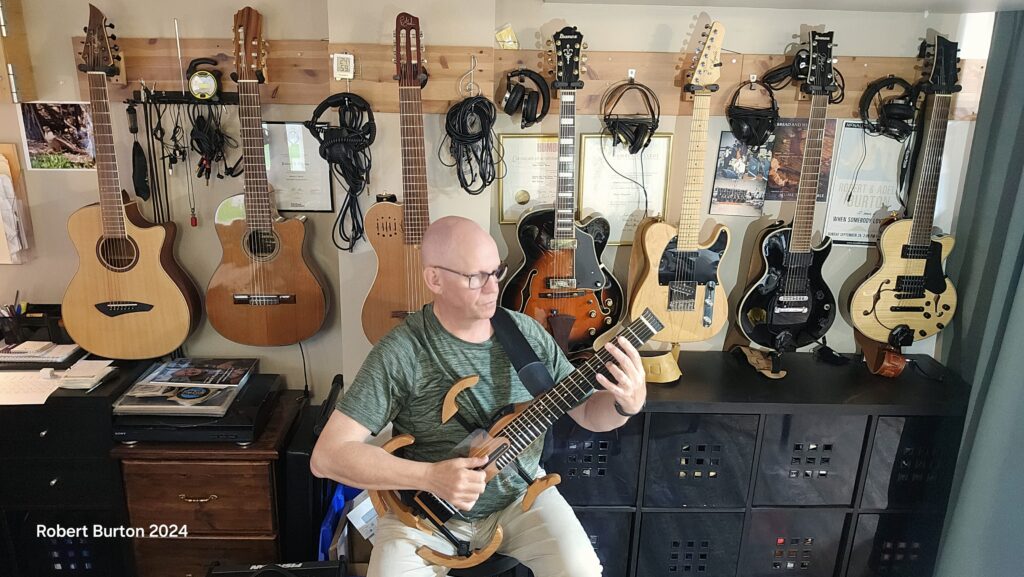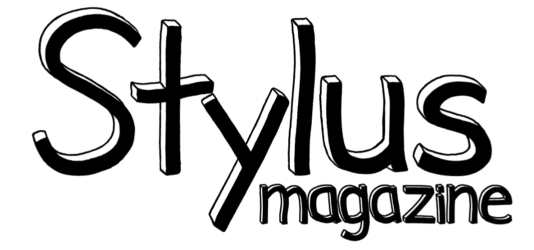
by Paige Drobot
Jazz artist Robert Burton is the preeminent musician, teacher and fly fisherman from Winnipeg, Manitoba. That sounds like a bold statement, but it’s true.
Paige: To be world-class in just one of those areas would be tricky enough to manage, but even if we take out the fishing part for today, one can only assume you have had a disciplined practice routine for a number of years. Can you describe your daily routine?
Robert: My practice habits have changed many times over the years, but one constant remains. I practice every day.
In the time I call B.C. (before child) and basically, before all things related to it, I woke up when I wanted and then spent the next 8-12 hours practicing on and off. I won’t say it was the most focused practice like I do now, but it was a lot. That gave me a lot of stamina both in the physical aspects of playing, but also the mindset. Then, as now, it was divided across more than one instrument.
After the birth of our son, I went for a short while, only picking up an instrument on a gig. It was a terrible feeling, so I had to make a change. I had to wrap my head around not being able to practice for super long stretches. I learned to practice in smaller chunks, broken up throughout the day. Instead of an hour warm-up to identify an area to practice, I had to target an area of practice and go straight to it.
I have windows of opportunity built into each day I schedule (with reminders on my phone) to work on particular things. Mornings tend to be for my drum set practicing, but after that, Mondays will have an hour of solo jazz guitar repertoire maintenance and expansion; Tuesdays are working on Pat Metheny tunes for solo guitar, Wednesdays for improv, etc., you get the point.
If I have a break in my teaching schedule, I’ll work on maintaining fundamentals like scales and arpeggios, which are basically finger calisthenics. Before bed, I usually play whatever I feel, something new or something I was digging into earlier in the day I want to do more of.
P: The reason you are hired for so many events is because you can play hours on end of seven-string solo jazz guitar. To be able to express yourself this way involves even more than a disciplined practice routine; you obviously have a full understanding of music.
R: I don’t think anyone fully understands music, but that is the joy of it. Something new is always around the corner!
P: Absolutely, great answer! When and where did you begin to study music, and how have you continued your studies?
R: Music is funny that way. I went to York University and Humber College for music. You have to have lots of stuff together just to get in. Imagine being asked if you have set any broken bones or performed surgery before getting into medical school.
P: Yes, that is so true about academic music vs other fields of study.
R: My music journey started with a cheap guitar from Consumers Distributing when I was 12. We were very poor and couldn’t afford lessons, and eventually, the guitar got sold for food money. The bug to play music was there, but I had no outlet. At 18, I quit school and, with a bus ticket and $20 in my pocket, I moved to Calgary with the express goal of working long enough to buy a drum set, take lessons and rent a house to practice. I literally did that exact thing, and a year later, I was playing in bands.
Fast forward to picking up the guitar. Not to become a guitar player but to understand music better. Fast forward to going to school, first as a drummer, then as a guitar player and then as a doubler.
I felt like, for a long time after, that I was still absorbing all the knowledge I accumulated in school. I still bought method books and studied those, but five years ago, I started studying online with Martin Taylor. He has an incredibly long resume and is one of the best solo fingerstyle jazz guitarists in the world. I just came back from a very inspiring weeklong guitar retreat with him and another great player, Robin Nolan. This has supercharged my passion level another notch. Between the teachers and working and performing with my peers, it was one of the best musical experiences I have had in forever, and I am going to attend again next year.
P: I relate to you in that we didn’t start as young as many, but with twice the drive, we had to do a lot of self-education on the way to opportunity and on an empty stomach.
P: You play a seven-string guitar with the seventh string tuned to B. Something that’s always interested me (especially as a player of a measly six strings) is the variety in tunings and, subsequently, voicings made by prominent players. I even recently heard someone doing all fourths, like an extended Stanley Jordan. Who influenced you to go with low B, and why do you prefer to play that tuning?
R: Yeah, it was daunting and wild: the options. Matt Raines and Jimmy Foster both had their own tunings and their own line of seven-string guitars. Despite there being a lot of seven stringers out there, choosing a tuning felt like uncharted territory.
Off the top, I wasn’t interested in changing the six I had. I didn’t need the hassle of a seventh string and having all the furniture moved on the rest of the guitar. I looked at low C, low A and the low B.
Low C made sense from a piano-istic key of C standpoint, would not stretch the intonation of the guitar or require any modifications.
Low A was attractive as it is the standard tuning in jazz guitar. Bucky Pizzarelli got me interested in this, and I am a big devotee of George Van Eps’ Harmonic Mechanisms for Guitar. It would have required drilling the post on the seventh tuner’s post and buying a six-string set and a single low A and hoping they sounded cohesive. Another factor is that while, in the hands of the experts like Pizzarelli, Howard Alden and Van Eps, the low A sounded amazing and seamless, I found lots of middling players with the low A made it sound like a bass player was in the room and would randomly play a low note.
I didn’t want to sound like that. Together with me having a stop along the way between being a drummer and a guitarist, I learned bass, and the low B won.
P: From my understanding, you can perform for hours on end because you have a huge repertoire of tunes and the ability to extensively improvise on all aspects of the composition.
R: Yeah, I can make a jam out of any tune. I find it fun to take pop tunes and play them ‘elevator style’ but I also love to reharmonize them. Sometimes just a surprise chord in there, sometimes a complete reworking.
P: What is your preferred guitar and amp combination for this type of gig?
R: For the sound alone, I love my Ibanez AFJ957 archtop. It’s a bit of a collector’s item now, and I can’t post a video of it without someone offering to buy it. If it’s going to be a longer gig or outside in the shoulder seasons, then I prefer my Agile Texan. It’s basically a seven-string telecaster that I put a mini humbucker in the neck position.
As for amps, I like all the ones I have. I recently picked up a Roland JC-40 that I love, a couple of first-generation BOSS Katanas, a Fishman Loudbox (if I want to go acoustic) and my trusty old Yamaha G-100 112 II. I put an Eminence Redcoat in there a few years ago, and it really sings. It’s only in the studio now because of the weight, but if someone wants to load it for me, my preferred combo is my Archtop and the Yamaha amp.
P: (Guitarists are so funny about trying to buy things right out of other musicians’ hands. This happens to me, too, for a bunch of pedals on my board. “Dude, I am USING it! You wanting it actually makes me want to let you have it less because I knew it sounded great, but you just confirmed the fact. ”)
Sometimes your playing is quite traditional but I have also seen you incorporate looping, if my memory is correct even Roland PK-6. How do you decide what to bring to a gig?
R: I love playing straight into a clean amp with a touch of reverb. I never want to lose that connection, but I am a geek and love technology. The PK-6 was a tonne of fun. Being a huge Rush fan, I always wanted some Taurus pedals. Playing chord tones or bass lines with my feet while playing guitar is amazing brain work, similar to playing a drum set. It really got a workout a decade-and-a-half ago when I shattered my elbow in a bicycle mishap. I had nerve damage, and two of my fingers were useless for a while, so playing bass with my feet kept me gigging on those solo and duo jobs.
Looping is another area that I dig. I never pre-record tracks; I always do them on the fly. When I had a regular gig at the Fort Garry Hotel, I used it once a set (It was a four-set, four-hour gig). For that, a Ditto or RC-1 did the trick. If I have any other long solo gigs, I still bring one for fun and to give my hands a rest.
On duo gigs with my wife Adelle, I use my RC-600 for looping and drum tracks and my SY-300 guitar synth and effects processor. The SY-300 provides a variety of guitar effects and, for some tunes, nice keyboard pads. I also have a few patches when I go full synth for solos or sound like a B-3. On both my pedal boards, as well as part of the effects package in my Katanas, I have an OC-5. I set the range to put 8vb on my lower three strings (B, E, A). Sometimes, I’ll swap out the SY-300 for my GR-55 for some more realistic sounds from the synth engine. For ensemble jobs, I would like to bring my Gamechanger Audio PLUS Pedal. Works and looks like a piano damper pedal. New to the fold and un-gigged as of yet is a Game Changer BIGSBY pedal. I can get the subtle whammy bar effects on any guitar.
P: You have a studio at home. Is there anything that you love to use there but would NEVER bring to a gig?
R: I think I have tried to justify all my weirder purchases by using them on a gig. But my oddest guitar hasn’t been gigged much. On a lark I had a custom-ordered seven-string baritone acoustic made. Tuned E-A-D-G-C-E-A. The lower four strings are the same pitch as a four-string bass. It is beautiful sounding with the right arrangements/key choices, but I have mostly used it as a bass when I have played with at my church.

